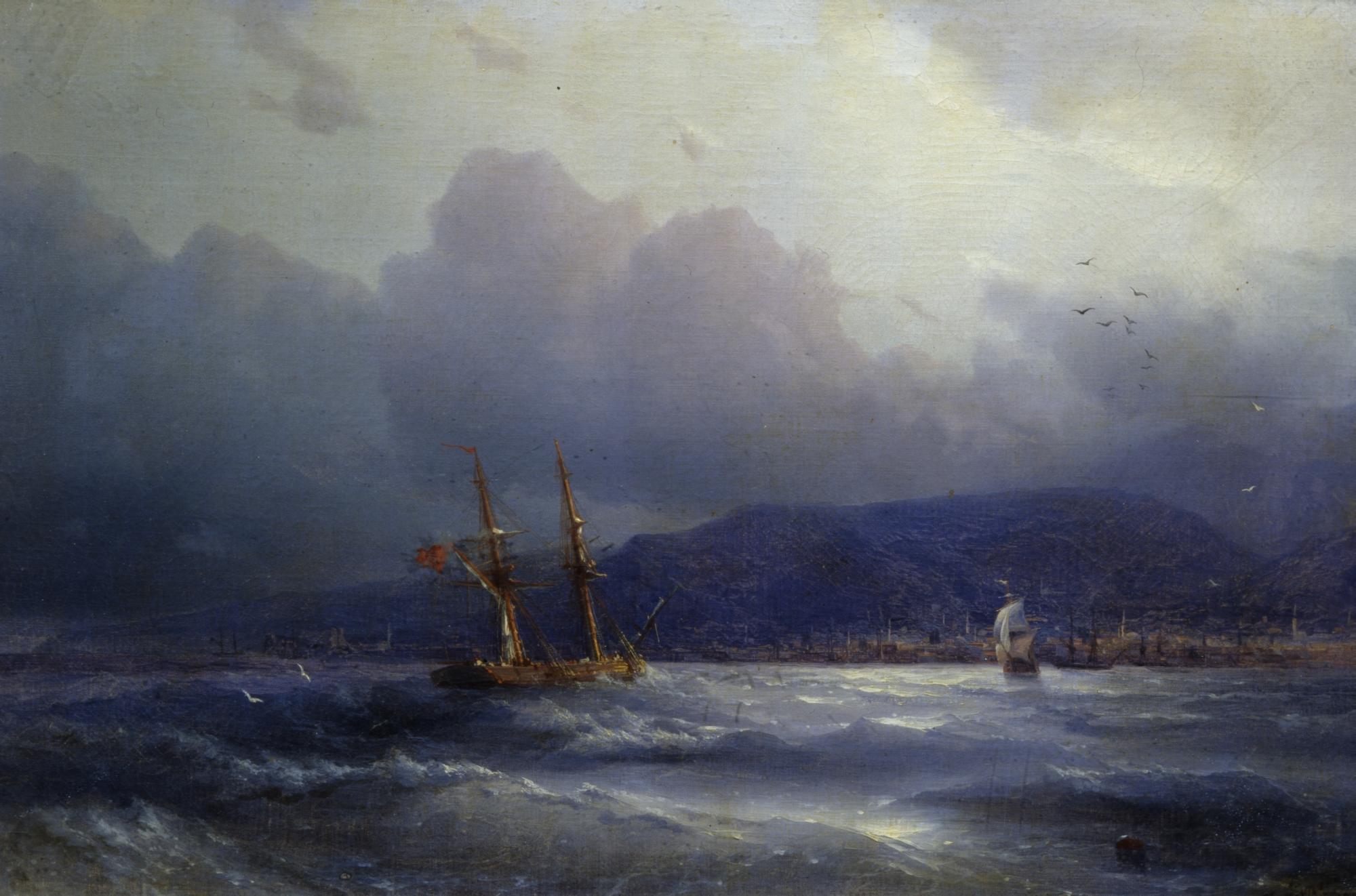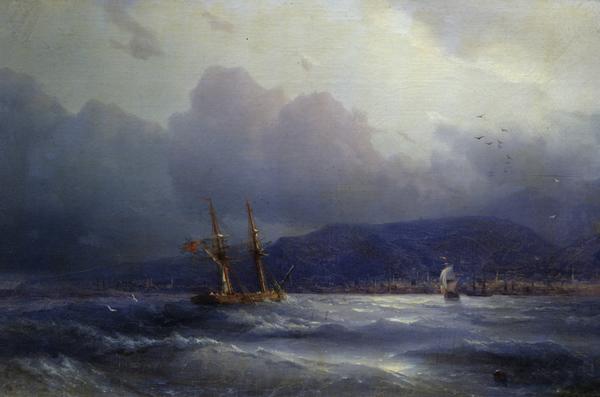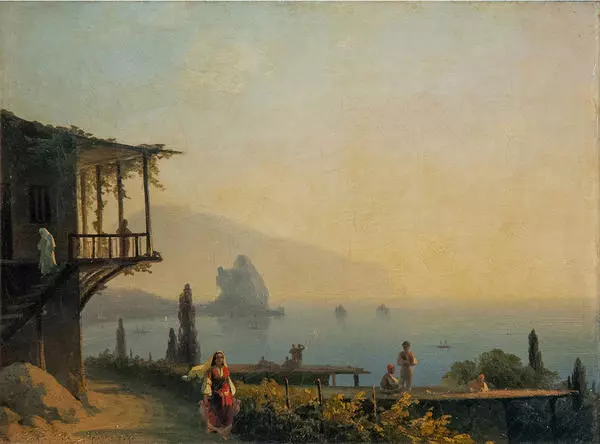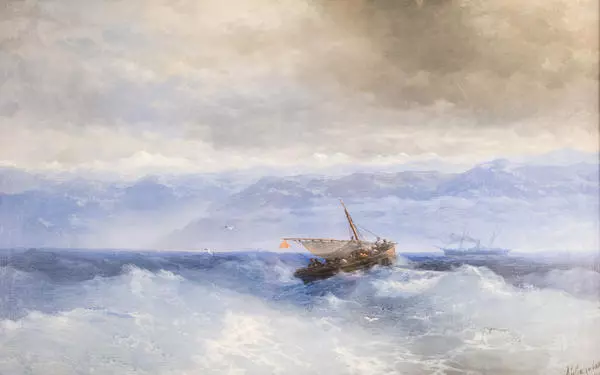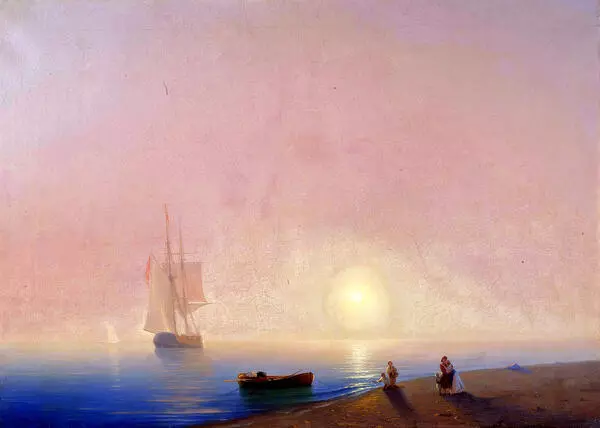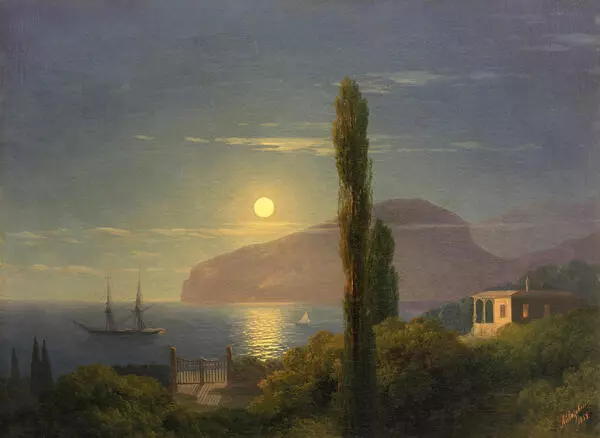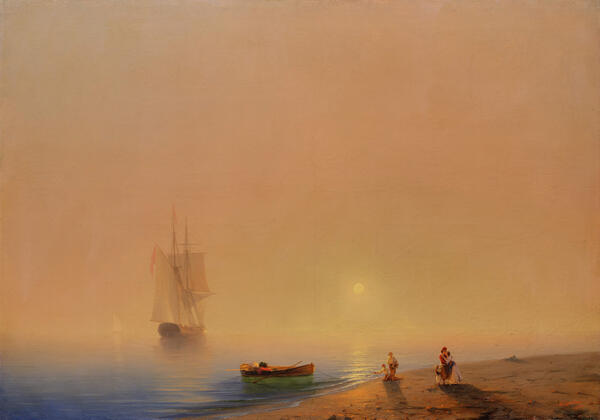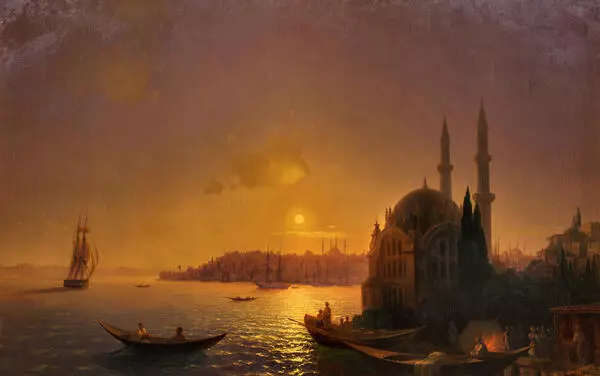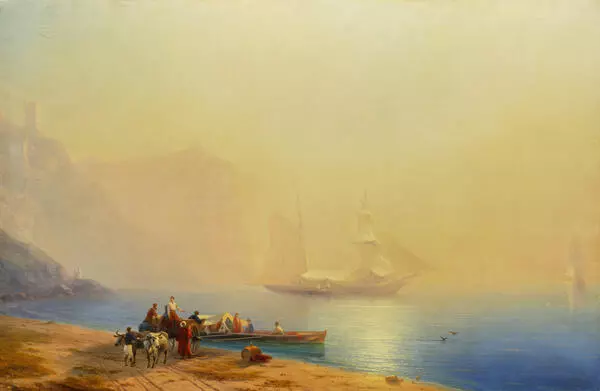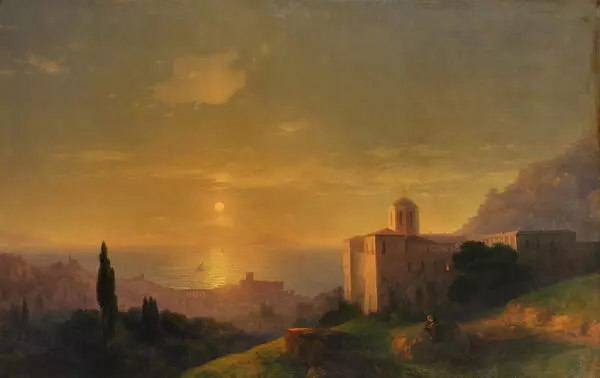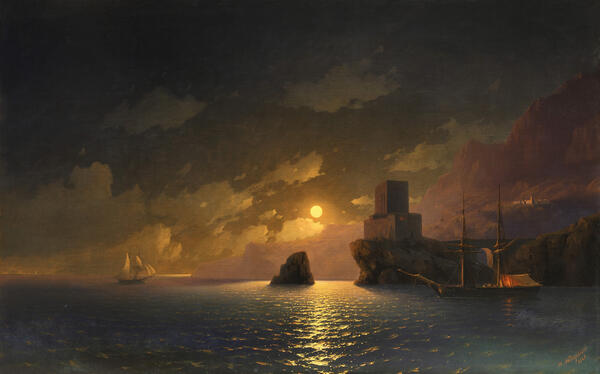Ivan Konstantinovich Aivazovsky devoted his whole life to portraying the sea. He entered the history of world art as a romantic marine painter, a master of the Russian classical landscape, transferring the beauty and power of the sea element on the canvas. Aivazovsky was inherently endowed with a brilliant talent, which quickly developed due to a happy сoincidence of circumstances and to the environment in which his childhood and youth passed. He lived a long labor life on the shores of his beloved Black Sea, which nourished his art with vivid images. Aivazovsky had his own established system of creative work. ‘A painter, who just copies nature, ” he said, “becomes its slave… The movements of the living elements are elusive for the brush: painting a lightning, a gust of wind, a wave splash from nature is unthinkable… An artist must remember them… Plots of paintings emerge in my memory, like in a poet”s one; having made a sketch on a piece of paper, I get to work and I do not leave the canvas until I have spoken out on it with a brush… “. The artist created a great many of seascapes – at least six thousand large and small paintings, by his own admission.
The Saratov Radishchev Museum has three paintings by Aivazovsky (View of Constantinople, A Ship Off a Shore, Trebizond from the Sea) and two sketches in passe-partout with reproductions of his photo portraits (Marina, Vesuvius). Every time the artist, trying not to repeat himself in the plots of seascapes, looked for new shades of sea water or clouds illumination, state of the atmosphere.
Being one of the bright representatives of the romantic trend in Russian painting, Aivazovsky searched to depict unusual states of nature. He especially liked to paint stormy sea and ships struggling with the raging elements, similar to what we can see in the picture Trebizond from the Sea. The picture shows sky with lead-grey clouds creeping from the mountains, shaking lead-colored sea, a ship tilting under the gusts of wind and seagulls rushing over the waves. And in the distance there is a beautiful view of the city of Trebizond with its terraces descending to the sea and dozens of vessels in the roadstead.
The twin mast ship, struggling with the storm, is not only the plot, but also the color centre of the picture. The silhouette of the ship, painted in warm brownish tones, contrasts with the dark-lead masses of clouds in the sky. The mountains loom in smooth lines against the background of the cloudy sky. A whitish fog envelops their peaks, conceals the clarity of the contours. The bright scarlet pennant and flag flying on one of the masts of the ship enliven the cool gloom of the stormy sky and sea.
